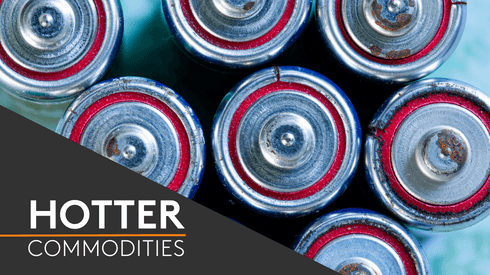The decline in nickel this morning, the sharpest among its peers, comes after it had dropped by 1.2% on Friday to $16,628 per tonne.
“The metals spent most of not all of last week looking for direction and as we open this morning they have, and it is downwards,” Kingdom Futures director Malcolm Freeman said in a morning note. “The Asian equities started to slip and with the Dow Futures down 100 points it was enough to unnerve some of the speculative money in the market.”
“Comments from Chinese Premier Li Keqiang weighed on markets as it is the second time in just a few days top officials talk about cost controls after last year’s surge in commodity prices. China will strengthen controls, Li said at a seminar yesterday, after panelists raised the issue of price pressures,” LME Desk analyst at Marex Spectron Anna Stablum said.
Indeed, it was comments by Chinese vice premier Han Zheng at the country’s Financial Stability Committee last week that higher commodity prices warranted close attention which brought metals downward on Friday.
Copper’s three-month price was down to $8,817 per tonne on Monday, a 1.2% decrease from Friday’s $8,926.50-per-tonne closing price, itself a 0.9% decrease from the previous day.
LME copper stocks continued to build on Monday, with a 3,450-tonne intake split between warehouses in Rotterdam and Hamburg. At 165,625 tonnes, total copper stocks on the exchange are at their highest since mid-November 2020.
Elsewhere in stocks, zinc’s total LME inventory rose by 5% on Monday morning to just under 282,000 tonnes, given a 14,600-tonne delivery into warehouses in Singapore and Port Klang, Malaysia.
On-warrant zinc warrants rose to 248,575 tonnes on Monday, up by 6.2% from Friday, and are now at the highest since February 2. This follows a sharp decrease in both annual and spot treatment charges (TCs) given tightness of concentrate supply in the market.
The three-month zinc price was also lower on Monday in line with the rest of the complex, with a 1.3% decline to $2,794 per tonne. The cash-to-three month spread was at a four-week high at $21.50 per tonne contango on Friday.
Other highlights
- The US Dollar Index was up to 92.28 on Monday at 9am, from Friday’s close reading of 92.19.
- Economic data out later on Monday includes retail sales in the European Union and the US Federal budget balance.





